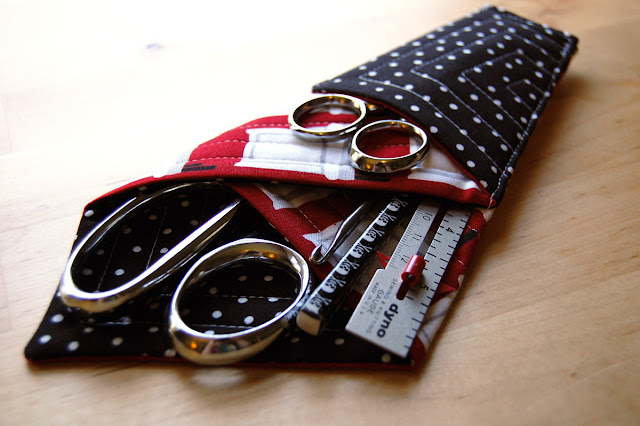300+ Years of Color Theory: Chromatics, The Analogy and Harmony of Colours
This is a new post adding to an old project; reading some of the most important books about color theory in the past 300+ years. I started this reading project in 2016 with a short post about the books on my reading list, and posted a short book report to remind myself of what I found important about each book. I recently found a few more books to add to the list, and this is one of my favorites.
George Field was an English chemist who published his essay, Chromatics: The Analogy and Harmony of Colours in 1817. In George's day, painters were either mixing their own concoctions or purchasing paints through a colorist who would prepare the mixtures. Paints were made from mostly natural sources (minerals, plants, animals, or simple compounds) and mixed with other chemicals to help bind the pigments to the painted surface. Some of these pigments didn't last long, and would eventually fade or discolor - while others were more stable if used properly. George Field made it his mission to study the chemical properties of pigments and manufacture the best paints possible for artists for color permanency and brilliance.
Artists Eugene Delacroix, J.M.W. Turner, and William Holman Hunt were among those who used Field's pigments and were influenced by some of his ideas.
This symbol above is pictured on the title page, and the two overlapping triangles appear again in colored illustrations throughout the book. My thoughts are that George found the triangle a clear symbol to illustrate his 3-pigment primary system as a reflection of "Universal Intelligence" (see below). And, let's not forget the triangle appearing at the center of Moses Harris' 3-pigment primary system in 1766.
I'm not huge on deciphering symbols, but these two overlapping triangles can represent alchemic symbols for unity and balance, incorporating all four triangular symbols for the elements air, earth, fire, and water. Surrounding the triangles is what looks like an ouroboros, a snake biting its own tail representing the eternal cycle of life and death. Again, I'm thinking George sees this as a representation of God's reflection in all things.
"Dull of consciousness therefore will be the mind that in contemplating a system so simple, various, and harmonious, as that of colours, should not discover therein a type of that triune essence who could not but construct all things after the pattern of his own perfection. And since of all sensible things colour is preeminent, for it gives value and distinction to whatever is visible, we may wonder the less that the perfection of form and system belongs supereminently to colours, or that they constitute a type of Universal Intelligence Himself."
Three basic or primary hues, RED, BLUE, and YELLOW are at the center of the system. The mixture of all three primaries mix to create black (again, echoes of Moses Harris' system), and other colors can be created from the mixtures of the three designated as secondaries and tertiaries.
Although George is definitely describing the physical mechanics of mixing pigments, he does include his Goethian ideas about the origin of colors; that color arises from the intersection of black and white, or dark and light. Thus, according to George, dark blue is related to black, bright yellow to white, and the intermediary (or mixture of both white and black) is red.
George also continues the lineage of directly comparing colors to music, as did Sir Isaac Newton (and many more color theorists after Mr. Field's time).
Overall, I see in George Field's color manifesto the continuation of several ideas from the past carried forward in the future. First, the 3-pigment primary system RED/YELLOW/BLUE is the law of the land, and these colors are "true primaries" because you cannot mix them from any existing pigment. Second, colors arise from the intersection of light and dark, and when mixed from the three primaries create a secondary and tertiary set. Third, when these colors are arranged in a circular diagram or chart, they parallel music notes in harmonies, chords, and pleasing combinations.
Where the phrase "you cannot mix red from any other color" is concerned, it was absolutely true in 1817 (and the tens of thousands of years before George Field's time) when the naturally available pigments could not create a hue recognizable as red. As this phrase has been carried forward by countless artists looking back to George Field for authoritative words on the art of paint and pigments, many have misunderstood the origin and meaning behind those words. When you see people ranting in various blog posts, YouTube videos, or other online venues, "THE COLOR WHEEL IS A LIE" and "RED IS NOT A PRIMARY COLOR" they are directly referencing George Field's words and ideas. However, just because you couldn't mix a red hue from other pigments in 1817, and mixing three pigments in those days could indeed result in mixing a number of other colors, doesn't mean that all of these ideas are LIES. It just means we've moved on to a new world of man-made pigments, paints, and ideas about color (thanks to the industrial and scientific revolution in the mid-1800s).
And finally, did you know that you can make any pigment primary system you want to with any handful of colors? It's a totally arbitrary type of system and not a fundamental law of physics. For example, Leonardo DaVinci believed there were 6 basic or primary colors for the painter; white, yellow, green, blue, red, and black. It is entirely possible that depending on the natural pigments DaVinci was using he could not in any way mix any of these primary colors from others in his system.
You can also pick any one yellow hue (there are many, some mustardy and warm while others are clear and cool), any one blue hue (from a deep dark blue to a bright clear blue), and one red hue (anything from magenta to a deep dark red) to create a 3-pigment primary system. In your system, you will be able to mix various colors from these three, but will not be able to create any of the three primary colors from these mixtures. While we can argue that some hues in the RYB scale (such as magenta red, bright yellow, and cyan blue) will create a better range of other colors when mixed together, it's still just a 3-pigment primary system and doesn't represent how artists are actually mixing and applying pigments in their work. (Unless that artist is on-purpose limiting their palette of colors, in which case it is called a personal preference and not an absolute law.)
So, to all those online arbiters of "RED IS NOT A PRIMARY COLOR" out there in the online color-theory world, I'd say both yes and no. RED is definitely a primary color in any shape or form of a 3-pigment primary system where it holds the place of one of the primaries. But IRL a set of "primary" colors doesn't REALLY exist. There are NO colors that, outside of a specific primary system (like CMYK for instance), can be named as an absolute "primary" pigment. None.
Where the laws of physics are concerned, making an absolute rule regarding color mixing isn't possible. Mixing two pigment colors together in dyes, acrylic paints, oil paints, watercolor paints, tempera paints, gouache paints, etc. isn't going to give you the exact same results because there are different chemicals, processes, and grounds involved in the use of these different media. Yes, sure, for specific media there are rules about how pigments mix together as evidenced by the plethora of "ultimate color mixing guides" available for watercolorists, acrylic painters, and oil painters. But again, one color mixing rule that works for one medium isn't applicable to the whole world of colors and color perception.
And that's why this book is one of my favorites; George Field clearly and concisely lays out his own personal color theory, which means you can trace some of the ideas still floating around today directly through this book. If you're using a 12-step RYB color wheel (like this one), although Johannes Itten is generally credited with the standardization of this tool, you can trace the idea of the 3-pigment primary system straight back to George Field.
_Wellcome_L0019270.jpg)









Comments